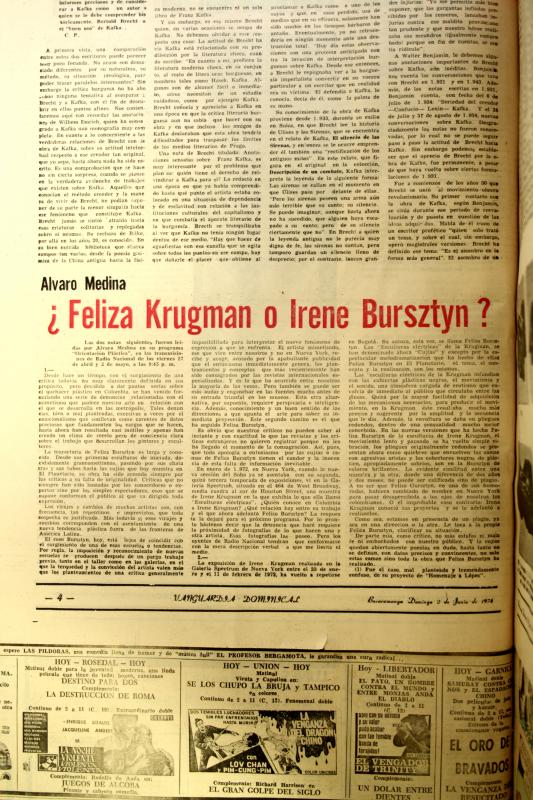Most of this article is dedicated to Colombian critic and curator Miguel González’s response to an accusation; he maintains that there is a connection between the installation (Las Camas) presented at the Museo La Tertulia in Cali in 1974, and Feliza Bursztyn’s aesthetic exploration. He asserts that originality “lies in the course taken by art history,” and admits that “a great deal has been written, staged, and experimented in relation to the bed.” Later, González puts Bursztyn and her work “in perspective,” demonstrating the irreverent, stubborn, and humorous attitude that has characterized her throughout her life, an attitude that is reflected in her art. González asserts that Bursztyn’s experimentation partakes of what he calls the idiosyncratic Latin American “seal.” Therefore, González maintains, localizing artistic production, and articulating differences between works according to where they are produced, validates research into the same themes in different contexts, since those contexts imply, capture, and expand on the concepts at stake in dissimilar ways. González also provides a critical analysis unrelated to the controversy. He describes Bursztyn’s work and delves into it, formulating readings that serve to enrich it. Indeed, this interest in the work is felicitous, since it allows this text—unlike others written about this controversy—to keep from falling into a discussion that has little to do with art and its concerns. (see “Bursztyn por encima de toda sospecha”, doc. no. 0185-UA; “Feliza Krugman o Irene Bursztyn”, doc. no. 1088241).

